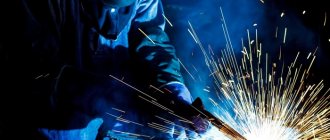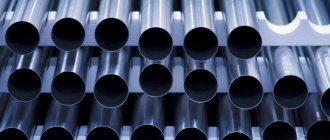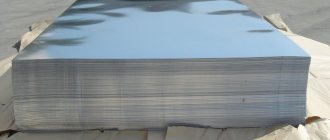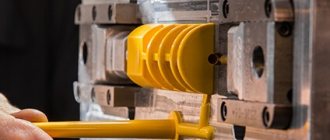Stainless steel products
Stainless steel products are becoming increasingly popular not only in construction, but also in everyday life. They attract the buyer with their aesthetic appearance and long service life. They are not able to oxidize, are practical to use, and environmentally friendly. The design of structures inside buildings, instruments in the medical industry, products in the chemical and food industries - everything is based on the use of stainless steel.
Positive traits
The main positive properties of alloy steel varieties are light weight, the ability to paint, bend, drill, laser cutting, turning, rolling, casting and welding. According to the project of the enterprise, a range of goods is produced from stainless steel , among which the following can be noted:
- roof rails;
- columns;
- flagpoles;
- bicycle parking;
- lamps;
- tables;
- chairs;
- floor coverings;
- fastenings;
- accessories;
- heat screens.
Properties of stainless steel
The physical and technical characteristics of structures made of stainless steel depend on the chromium content. A typical alloy uses up to twenty percent of the element. Due to the fact that the metal combines with oxygen molecules to form an inert protective film, all stainless steel products are famous for their resistance to corrosion.
In addition to the main element chromium, metals such as carbon, manganese, and silicon can be added to the alloy. And to improve its physical properties, factories add nickel, molybdenum, titanium and cobalt to products.
Stainless steel is divided into several types, due to the percentage of metals that are added to it.
- chromium;
- chromium-nickel;
- chrome with the addition of manganese and nickel;
According to its properties, metal is divided into grades:
- 200 series steel. This is the cheapest steel of all series. The AISI 201 brand is the only representative in this series. The alloy contains manganese and nitrogen instead of nickel. Mainly used only in the food industry, in the manufacture of pipes for railings.
- 300 series steel. This series contains four grades of metal. AISI 304, 316 are anti-corrosion and are capable of being in a highly aggressive environment for a long time. Molybdenum is added to the latter grade, which makes it suitable for the oil and textile industries.
- Grades AISI 316 T, 321 are distinguished by the addition of titanium. Moreover, in the last series there is an increased amount of it than in the previous one. This amount of durable metal in the alloy allows it to be used in the production of seamless pipes, gas turbine blades, pipeline fittings, and flanges.
- 400 series stainless steel. This stainless steel has a large amount of chromium in the alloy content. And the low carbon content gives it ductility and good weldability. It is used in the oil and gas industry, for finishing buildings with decorative elements made from this metal. The only brand is AISI 430.
Popular stainless steel products
Due to the fact that objects made of this steel can easily be forged, cut and otherwise given various shapes.
This alloy is used to produce:
- stairs;
- handrails;
- columns, pillars and racks;
- bridges for moving from one platform to another;
The production of stainless steel products also includes the production of:
- sewer pipes;
- pipelines for water supply, heat supply;
- for shipbuilding;
- in medicine for the manufacture of scalpels, tweezers and other medical equipment;
- stainless steel products, which are made from alloys resistant to mechanical damage, decorate buildings, basement entrances, porches;
- it is used in the automotive industry and heavy industry;
Stainless steel pipes are in particular demand. They are quality material. The advantages of stainless steel pipes include strength and reliability. They are not subject to erosion. They can be assembled for both welding and fittings.
Such pipes are polished both outside and inside, which prevents the appearance and proliferation of bacteria.
The only drawback of such pipes is the inability to cut threads yourself.
Manual and semi-automatic welding of stainless steel in argon (AC/DC TIG, MIG)
To perform manual welding of stainless steel in an argon environment, tungsten electrodes are used. This technology, even at home, allows you to obtain high-quality and reliable connections for products that are not very thick. Welding with such electrodes on stainless steel is used mainly for installing communications from pipes through which gases or various liquids will be transported under pressure.
Austenitic stainless steel should be welded with particular care and caution
This technology has certain features.
- To ensure that tungsten, from which stainless steel electrodes are made, does not get into the molten metal in the welding zone, the arc is ignited in a non-contact manner. If it is not possible to do this directly on the part, then the arc is lit on a special coal plate and carefully moved to the workpieces to be joined.
- Welding stainless steel using this method can be performed with both direct and alternating current.
- The modes are selected depending on the thickness of the parts being connected. Such modes, in particular, include the parameters of the cross-section of the tungsten electrode, the diameter of the wire used as an additive, current parameters (strength and polarity), shielding gas consumption, and welding speed.
- It is very important that the alloy level of the filler wire is higher than that of the parts being joined.
- During the welding process, stainless steel electrodes should not make oscillatory movements. If this requirement is neglected, this may lead to disruption of the welding zone and oxidation of the metal in its area.
By using this technology, the consumption of tungsten electrode can be reduced. To do this, you need to keep the argon supply open for some time (10–15 seconds) after the welding process is completed. This procedure helps protect the hot tungsten electrode from active oxidation.
Semi-automatic welding of stainless steel in an argon environment, in fact, has few differences from the conventional manual method. Its main difference is that the wire is fed into the welding zone using special equipment. Thanks to mechanization, the process proceeds much more accurately and at greater speed.
Thanks to the use of semi-automatic equipment, the following welding techniques for stainless steel parts can be implemented:
- jet transfer method, which allows you to effectively weld parts of large thickness;
- short arc welding - for connecting parts of small thickness;
- Pulse welding is a universal technology that allows you to obtain high-quality and reliable connections and is the most profitable option financially.
Tig welding of stainless steel
Manufacturing technologies
The production of stainless steel metal products is well established in special steel mills. Products are manufactured by only top-class specialists. Working with this capricious metal requires special training and a high level of skill.
The correct proportions for the structures are set by a special computer program. On the computers used by professional engineers in factories, you can see the finished product side-by-side, in 3D, at the very beginning of the journey, when the order is just being processed by the company’s brain.
Manufacturing of stainless steel structures
Engineering professionals must have creative thinking. Otherwise, the design may turn out to be unattractive and may be rejected by the customer.
Next comes the production process, which is the most complex and time-consuming. The process technology is as follows:
- production of stainless steel itself;
- steel is poured into special molds, where it undergoes a rolling procedure. At this stage, the metal receives special qualities and properties. Without passing this stage, the steel will be considered unprocessed and it will become difficult to work with it;
- then comes stamping and laying out the metal into specially prepared ingots. This type of work is performed not only by qualified workers, but also by specialized machines;
- then it is sanded, painted and delivered ready-made to the customer;
How to work with a welding machine?
This requires experience, practice and strict adherence to safety regulations. First, the newly minted master practices on a damaged piece of metal. This is necessary to acquire knowledge of igniting and maintaining an arc based on maintaining a constant gap between the electrode and the workpiece.
After this, the technique of making a weld is studied. If it turns out smooth without difficulty, then you need to learn how to correctly regulate the current strength to work with different thicknesses of the workpiece.
At its core, welding in the process of creating metal crafts is used to connect two parts. This occurs by melting the surface of the future joint. A solid metal structure is formed through the use of an electrode.
However, this is not an easy task and requires a lot of practice and experience, since it is necessary to ensure that the top layer of the workpiece melts, otherwise holes may form.
After acquiring basic skills in creating metal crafts by welding, you can move on to doing simple work to gain experience. For this, it is more profitable to use an inverter, since it has increased mobility and consumes less electricity.
Advantages and disadvantages
The structures made from these alloys are famous for their lifelong service life. Stainless steel has the following advantages over other steel:
- highest resistance to corrosion. To do this, more than seventeen percent chromium is added to the alloy. This ensures the use of structures made from it in any aggressive environment;
- the original appearance and technical properties of the product are preserved even after thirty years of use;
- bacteria never accumulate on such structures;
- heat resistance. Products made from this alloy can be used at high temperatures. They are not deformed;
- Stainless steel structures are famous for their durability.
Sudden merch
After many years of inactivity, I started the CNC milling machine again and was happy to make a belt buckle. The manufacturing process (similar) was shown in more detail here:
But this one has undergone changes. Firstly, I gave a darker color to the main surface using a different finishing method. And, in addition to darkening, it also has a small pothole. It’s very nice, it gives it that “seasoned” look. And it will age beautifully, the edges will be polished by the belly when worn, and closer to the center it will remain darker.
And I polished the central trim in the mirror.
Voshchemta, the composition of the product is 100% AISI304 stainless steel. Those. This doll is not afraid of sea water, most acids or alkalis. Well, in itself - 3mm stainless! It is much more difficult to bend and break than to lose.










